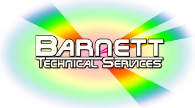Applications on Photovoltaic Materials

Find out how CL can investigate QD nanowires
| Field | Material | Technique |
|---|---|---|
| Fundamental and applied research | Transition metal dichalcogenides | Hyperspectral imaging |
Abstract
In order for photovoltaic (PV) power generation to provide a significant fraction of the world’s energy needs, the cost of panels, per Watt generated, must be reduced.
The best prospects for low-cost, high volume photovoltaic power generation are thin film inorganic compounds including CdTe and Cu (In, Ga) Se2 (CIGS). These two materials presently make-up almost 20% of solar panel sales, with it likely that this fraction will increase, due to the following advantages over Si:
- The direct band gap of these materials means that a greatly reduced thickness of material, 2–5 μm, was needed compared to Si, 100–400 μm.
- This reduced thickness leads to greatly lowered requirements for crystalline quality in the solar absorber, it opens the door for a wider variety of possible production routes; lowering costs and increasing throughput.
Cathodoluminescence is able to provide characterization of these thin film PV materials with a spatial resolution unmatched by other techniques. The Attolight system in particular provides the following advantages:
- Defects such as grain boundaries and dislocations can be analysed with regard to both their signal intensity and their CL spectroscopic profile. This can provide information about both the electrical activity of the defects and any chemical segregation effects.
- The highly stable cooling stage allows high-resolution scans down to 10 K, giving information about the spatial distribution of dopants and defects levels. Additionally, the temperature dependence of excited states can be determined, giving activation energies for these states.
The local measurement of CL emission lifetimes provides unprecedented characterization of defects and composition gradients; carrier lifetimes are an important factor in PV where they must diffuse to the contacts in order to be collected.
This combination of data concerning the defects, structure and energy levels in photovoltaic materials provides a very full analysis.


Source: Attolight
